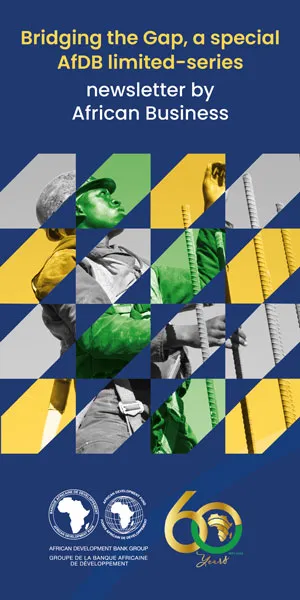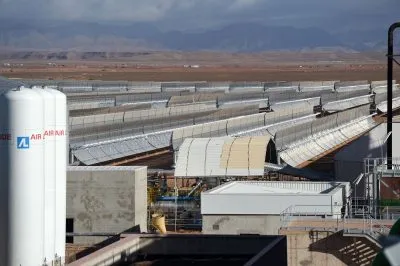If renewable energy is to drive future growth, Africa will need to do more to attract finance and investment. James Gavin reports on progress
If Africa is going to ramp up its renewable generation capacity to the level of its true potential, it will have to confront the need to dig deep to finance it. Increasing sustainable generation capacity by 2030 will require between €39-€62bn ($44-69bn) of annual financing, mostly for renewable generation, notes the African Development Bank (AfDB).
According to the International Renewable Energy Agency (IRENA) Scaling Up Renewable Energy Development in Africa report issued in 2019, to transform Africa’s energy so that it could meet nearly a quarter of its energy needs from indigenous and clean renewable energy by 2030 will require an average annual investment of $70bn, resulting in carbon-dioxide emissions reductions of up to 310 megatonnes per annum.
While declining technology costs have resulted in solar PV plants showing a 20% year-on-year reduction annually in the cost of solar module prices over the past five years – rendering renewable energy a more cost-effective prospect for most – the continent’s governments and private sector developers still face a seismic challenge in capturing the funding needed to get anywhere near the targets outlined by the likes of IRENA.
Improving the investment environment
Meanwhile many utilities are still saddled with sizeable debts and reliant on the sovereign to bail them out – putting them beyond most commercial lenders’ comfort zones.
The result is that in Africa, investment in utility-scale generation and transmission infrastructure remain lower than for any other global region. Lenders are still focused on large, centralised power stations backed by purchase agreements resting on sovereign payment guarantees.
This has reinforced the sense that governments across the continent need to redouble their efforts to create a more attractive investment climate for renewable energy.
“One of the biggest challenges for project developers focusing on renewables in Sub-Saharan Africa is that the regulations in some countries have never been clear or consistent,” says Obbie Banda, Underwriter at the African Trade Insurance Agency (ATI).
“African countries have needed a lot of investment by DFIs to help build capacity at the regulator and utilities level and are now better placed to help attract additional private investors.”
According to Obbie, there have been improvements recently. Most countries now have specific policies to attract renewables through transparent auction systems or feed in tariffs, he says.
But significant obstacles remain. One of the biggest hurdles is that investors, multilateral institutions and sovereigns are still largely focused on backing large-scale mega projects, when it is often the smaller-scale schemes such as on-grid renewables and distributed power that can make the most difference in advancing the energy transition agenda.
Space has been left for donors and other institutions to create new structures that help direct capital to where it is most needed. The World Bank’s Scaling Solar programme aims to build markets for solar schemes and its early fruits have seen two 30 MW solar plants constructed in Senegal.
Meanwhile the Global Energy Transfer Feed-in Tariff (GET FiT) Programme is assisting some African states pursuing a low-carbon development path. Roll-out of the programme started in Uganda with a portfolio of 17 small-scale renewable energy generation projects promoted by private developers, with a total installed capacity of about 160 MW.
The underlying aim is to have African governments create the foundations for a more attractive framework for investment in renewable energy. Having witnessed the success of South Africa’s renewable energy programme, Uganda, Zambia and Ethiopia have committed to adopting standardised and competitive programmes that tackle some private investors’ concerns over offtake issues for renewables.
The result has been lower tariffs and the most competitive form of energy. In Uganda, GET FiT has now mobilised $450m in investments directed at increasing national energy production by around 20%, guaranteeing energy supply for roughly 200,000 households.
Despite the promising advances in Uganda and Zambia, most of the current project activity in the renewable energy space remains in South Africa, the regional pioneer in prompting renewable energy.
Bhavtik Vallabhjee, head of Power, Utilities and Infrastructure at South Africa’s ABSA Group, says the country had been the “low hanging fruit for financial institutions over the last few years due to the large volume of transactions over a short period of time”.
South African banks have taken care of most funding for renewables projects. These are funded in rand, with a local currency tariff and Power Purchase Agreement (PPA).
“For a number of reasons, when you look across the region, many markets have not had the sort of scale that South Africa has come up with in the last eight or nine years,” says Vallabhjee.
“You have had other programmes on the continent such as in Morocco and Egypt, and you have had the Ugandan GET FiT programme now replicated in Zambia. And then we have had the Scaling Solar programme by the IFC in four countries, Senegal, Ethiopia, Madagascar and Zambia. However, it’s really South Africa that has had its REIPPP programme that has taken off with the government’s roadmap charting the energy future up until 2030.”
The attraction of smaller schemes
Given the difficulty of securing financial backing for renewable megaprojects, many financiers and investors are now looking towards smaller-scale schemes.
“We have found that the various renewable utility-scale auctions are becoming increasingly competitive on an absolute return basis primarily as a result of an increasing number of sector-specific players in the space and the relative ease of access to these procurement processes,” says Olusola Lawson, Investment Director at Africa Infrastructure Investment Managers (AIIM). “So we have decided to explore a different track in terms of supporting the energy transition – looking at distributed solar businesses.”
In terms of AIIM’s distributed solar strategy, it has partnered with BBOXX to develop a next generation distributed utility, serving customers in the solar home systems space across Kenya, Rwanda and the DRC.
“In West Africa, we have also partnered with Helios Investment Partners to build out a platform called Starsight, which is today building the largest distributed solar, storage and cooling businesses in the Nigerian and Ghanaian markets. It has roughly 40 MW in installed rooftop solar, storage and hybrid diesel gensets providing stable power to corporate and industrial customers,” says Lawson.
In South Africa AIIM has partnered with Orionis to build out a portfolio of commercial and industrial offtakers with PPAs agreed for 15 MW of generation across a number of breweries and other industrial facilities in South Africa. “This is a different approach to tackling the energy transition and is a more nimble construct than large utility scale projects with all the associated difficulties in terms of development timelines, utility creditworthiness, and grid stability,” says Lawson.
Cheaper costs are a lure
Cheaper costs have attracted other investors, such as Actis, a major international group with a sizeable energy portfolio in Africa – including 1 GW of wind power across Egypt, Senegal and South Africa.
Price remains king – and here things are moving in a positive direction. “The first thing to consider is the cost,” says Lisa Pinsley, Director of Energy at Actis. “The cost of renewables has dropped so much that it doesn’t require subsidies anymore. It’s very cheap, cheaper than thermal power and that just makes sense for African economies.”
Financial innovation is also making a mark on the sector. For example, the AfDB is now offering credit guarantees to local banks to provide local-currency lending to off-grid energy providers, enabling them to reach more households more quickly. A loan facility extended in 2019 provided $27m to an off-grid energy scheme in Côte d’Ivoire that will reach 100,000 households with pay-as-you-go solar home systems.
In a further sign of the increasing sophistication of financing mechanisms, the AfDB can now package the cashflows from pay-as-you-go customers into securitised products to sell to local and international investors.
International initiatives
Renewable schemes are also likely to benefit from wider international initiatives such as the Climate Investment Platform (CIP) which is designed to scale up climate action and catalyse the flow of capital to clean energy initiatives.
The platform, set up by IRENA, the UN Development Programme and Sustainable Energy for All, in cooperation with the Green Climate Fund, aims to add significant value to Africa’s efforts to increase the share of renewables in its energy sector, as it serves to facilitate the matchmaking of bankable projects with potential investors, as well as to enable frameworks for investment by promoting multi-stakeholder dialogues to address policy and regulatory challenges.
Over time, African projects sponsors and financiers are getting greater experience with renewable energy. This should give uplift to the sector, as will tighter regulations that make it more difficult to back the more carbon emitting energy technologies. Coal is becoming more challenging for investors to expose themselves to.
“We can see a trend,” says Actis’ Pinsley. “For our first two funds, we could invest in all technologies, but by the time we launched the third fund, we and our investors didn’t want to invest in coal anymore. By the fourth fund, we didn’t want to invest in heavy fuel oil anymore, unless there is a gas conversion story. For the future, we’re now focused on solar, wind and gas, and possibly operating hydro and geothermal.”
No going back
Looking ahead, the coronavirus outbreak will continue to make lenders more selective about which energy projects they will back. Banks are expected to shy away from some, and getting approvals might take longer than previously envisaged.
And yet the circumstances that motivated the energy transition remain in place. Climate change is becoming critical for all African economies.
Says Pinsley: “About five to 10 years ago, most Africans would have said, ‘renewables are so expensive and coal is native, therefore we’re simply going to use coal. The Western world is still emitting huge amounts of carbon more than us, so don’t come and preach to us about climate change’. But now that the world has let climate change come to a boiling point, it has become everybody’s problem. There’s no going back.”
Want to continue reading? Subscribe today.
You've read all your free articles for this month! Subscribe now to enjoy full access to our content.
Digital Monthly
£8.00 / month
Receive full unlimited access to our articles, opinions, podcasts and more.
Digital Yearly
£70.00 / year
Our best value offer - save £26 and gain access to all of our digital content for an entire year!
 Sign in with Google
Sign in with Google 



